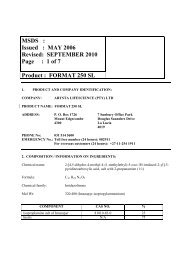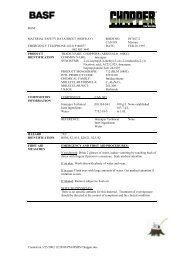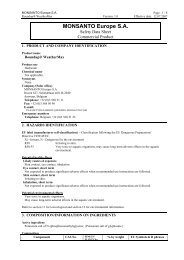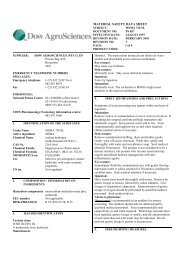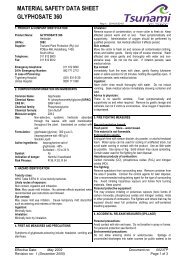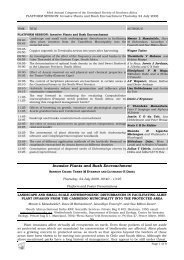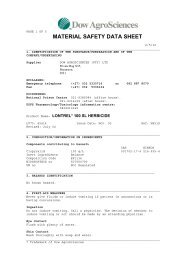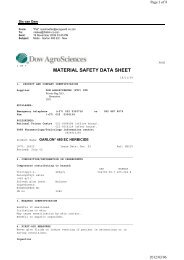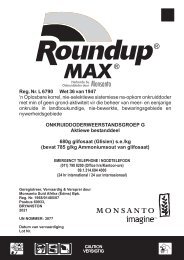MSDS Access 240 SL.rtf - Bush Encroachment
MSDS Access 240 SL.rtf - Bush Encroachment
MSDS Access 240 SL.rtf - Bush Encroachment
You also want an ePaper? Increase the reach of your titles
YUMPU automatically turns print PDFs into web optimized ePapers that Google loves.
PAGE 3 OF 6<br />
MATERIAL SAFETY DATA SHEET<br />
HERBICIDE<br />
ACCESS* <strong>240</strong> <strong>SL</strong><br />
18/10/10<br />
______________________________________________________________<br />
_________<br />
7. HANDLING AND STORAGE<br />
Handling<br />
Use good personal hygiene. Do not consume or store food in the work<br />
area. Wash hands and exposed skin before eating, drinking or smoking<br />
and after work. Avoid skin contact. Remove contaminated clothing<br />
immediately and wash skin area with plenty of water.<br />
Storage<br />
Product should be stored in compliance with local regulations.<br />
Store in a cool, dry, well-ventilated place in the original<br />
container.<br />
Protect from excessive heat and cold. Do not store near food, drink,<br />
animal feeding stuffs, pharmaceuticals, cosmetics or fertilisers.<br />
Keep<br />
out of reach of children.<br />
_____________________________________________________________________<br />
___<br />
8. EXPOSURE CONTROLS/PERSONAL PROTECTION<br />
Exposure Guidelines<br />
Picloram: ACGIH Threshold Limit Value (TLV) is 10 mg/m3 TWA-8 hours.<br />
Engineering Controls<br />
Good general ventilation should be sufficient for most conditions.<br />
Local exhaust ventilation may be necessary for some operations.<br />
Respiratory Protection<br />
When airborne exposure guidelines and/or comfort levels may be<br />
exceeded,<br />
use an approved air-purifying respirator.<br />
For emergency conditions, use an approved positive-pressure selfcontained<br />
breathing apparatus.<br />
Hand/Skin Protection<br />
For brief contact, no precautions other than clean body-covering<br />
clothing and chemical resistant gloves should be needed.<br />
For emergency conditions: Use protective clothing impervious to this<br />
material. Selection of specific items will depend on operation.<br />
Eye/Face Protection<br />
Use safety glasses. Where contact with the liquid is likely, chemical<br />
goggles are recommended.



